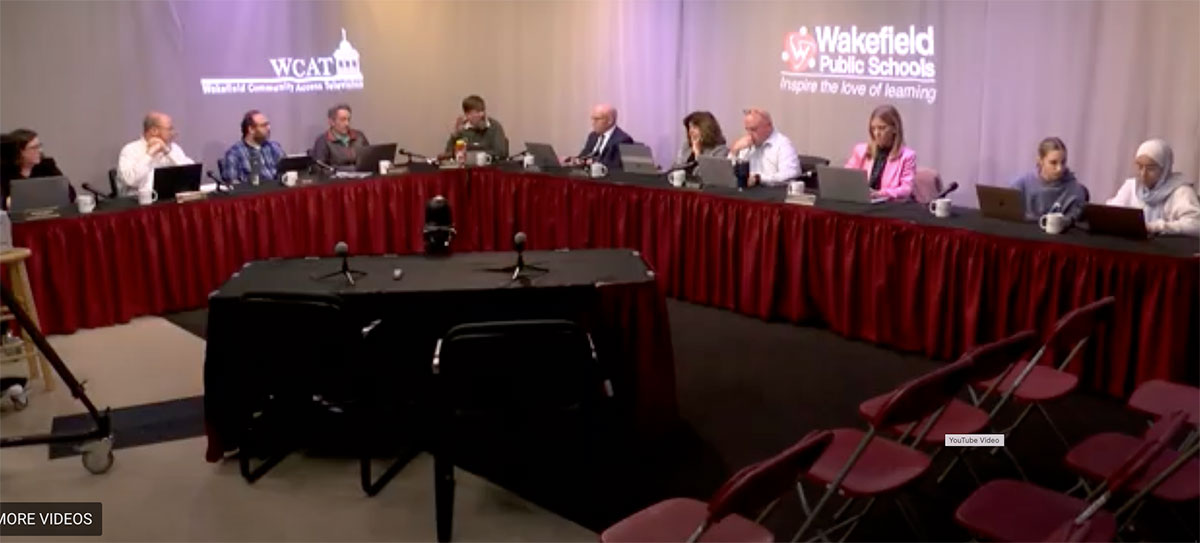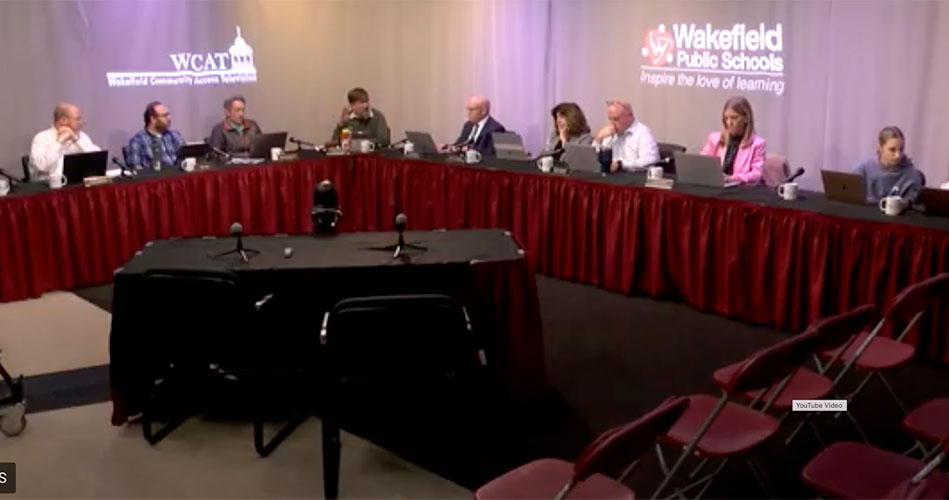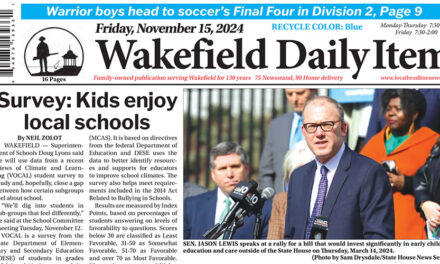
“You can learn a lot from students,” says Superintendent of Schools Doug Lyons of a recent student focused- survey. “It’s about how students perceive their environment. It’s a way to highlight the things we’re doing well and what we need to improve.”
By NEIL ZOLOT
WAKEFIELD — Superintendent of Schools Doug Lyons said he will use data from a recent Views of Climate and Learning (VOCAL) student survey to study and, hopefully, close a gap between how certain subgroups feel about school.
“We’ll dig into students in sub-groups that feel differently,” he said at the School Committee meeting Tuesday, November 12.
VOCAL is a survey from the state Department of Elementary and Secondary Education (DESE) of students in grades 4,5,6,8 and 10 given around the time they take the state Comprehensive Assessment System test (MCAS). It is based on directives from the federal Department of Education and DESE uses the data to better identify resources and supports for educators to improve school climates. The survey also helps meet requirements included in the 2014 Act Related to Bullying in Schools.
Results are measured by Index Points, based on percentages of students answering on levels of favorability to questions. Scores below 30 are classified as Least Favorable, 31-50 as Somewhat Favorable, 51-70 as Favorable and over 70 as Most Favorable. Ninety three percent of Wakefield students in the designated grades participated, higher than the state average of 73 percent. “You can learn a lot from students,” Lyons feels. “It’s about how students perceive their environment. It’s a way to highlight the things we’re doing well and what we need to improve.”
Overall, Wakefield scored 53 on the general School Climate and 52 each on Engagement (the extent students feel adults value diversity, feel there is a social connection and respect between staff and students and among students and feel engaged intellectually and emotionally), Safety (the extent students feel safe and bullying is dealt with effectively) and Environment (the extent students feel they are in a positive instructional environment and feel they have academic support).
The state-average score in those categories are 50 in School Climate, Engagement and Safety and 51 in Environment.
Comparing subgroups however, data indicates English Learners scored 58 in School Climate, 60 in Engagement, 52 in Safety and 59 in Environment, while Non-English Learners scored 52 across the board.
Hispanic students scored 55 in School Climate, 56 in Engagement, 53 in Safety and 55 in Environment.
Data, however, can be difficult to interpret because it is sometimes contradictory. White students scored 52 in School Climate and Environment and 53 in Engagement and Safety, perhaps because the subgroup, among the largest in the school system, includes other subgroups like the low-income group.
Asians scored 56 in School Climate and Environment, 53 in Engagement and 57 in Safety, while African-American/Black students scored 53 in School Climate, 52 in Engagement, 56 in Safety and 57 in Environment.
Scores by those subgroups are probably folded into English Learners because students can fall into multiple subgroups.
Interestingly Students with Disabilities scored higher than oddly titled Not Students with Disabilities 56-52 in School Climate, 56-51 in Engagement, 53-52 in Safety and 57-52 in Environment, perhaps because of the services they receive.
In his report, Lyons presented local data from various grades about how students feel about school, using percentages. He reported 99 percent of 4th graders feel safe and their teachers care about them and help them succeed when they need help and 97 percent feel their teachers explain things in ways they can understand, while 97 percent of 5th graders feel their teachers are proud of them when they work hard and 93 percent feel students, teachers and principals work together to stop bullying. “Fourth graders feel school is a special place,” he said.
Among 8th graders he reported 97 percent of them feel students, teachers and their principal work together to stop bullying, 94 percent feel teachers promote respect, 93 percent feel their teachers respect their parents and believe students can do well and 90 percent feel students are given multiple chances to succeed.
Given they are more articulate, local responses from 10th graders were more elaborate in VOCAL categories. Under Engagement, 94 percent of students are open to having friends from different backgrounds and feel adults in the school treat students respectfully and 91 percent feel teachers promote respect and they are welcome in extracurricular activities.
Under Safety, 94 percent answered they have friends they can rely on and feel teachers will act to stop bullying, 87 percent feel a sense of belonging and 79 percent feel teachers won’t let students bully other students.
Under Environment, 89 percent feel teachers set high expectations, 87 percent feel teachers inspire confidence and support them even when their work is not their best and 83 percent feel they have access to help.s
“Sometimes index scores don’t reflect what students are thinking,” Lyons said. “These scores are a remarkable testament to the work being done.”





